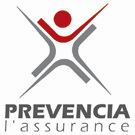With summer upon us and the season of storms being here again, it’s worth doing two things: (A) checking your insurance policy’s details for cover for storm damage (not all policies are the same) and (B) keeping in mind the things that you can do to be prepared.
Your local mairie may have a system for notifying residents when particularly violent storms have been announced. Météo France’s website also offers postcode-specific warnings.
The potential violence of storms, especially in or near mountainous regions of France, is impressive and expats from gentler climates often comment on this. The combination of risks – heavy rain, hail, flooding, lightning and wind – is something that home owners can to some extent prepare for. Here’s some basic advice.
Before a storm arrives
Put under cover or bring inside anything that the wind can pick up and hurl around. Flower pots, rubbish bins, lightweight patio or pool furniture are obvious examples. Closing windows is essential. Closing shutters on exposed windows can be wise, but we suggest that you leave electric shutters open if your property is such that a power cut could result in you being trapped inside!
During a storm
If you are already indoors, stay there! Unplug as many electric appliances as you can. (You will be amazed at the sorts of claims we have received to replace kit that has been blown during a storm. Even small charges can arc across USB cables and unplugged power leads, resulting in trashed external hard drives that had been specifically unplugged in advance!) Unplug and leave a gap between cables and power sockets. If you need to make phones calls, mobiles are safer than land lines.
Stay clear of water (baths, showers, sinks and basins). Being poolside may not be wise either.
If you notice an increase in static electricity – or your hair going vertical! – a lightning strike is probably imminent.
If you’re caught out in a storm
In a car, hail, driving rain, fallen trees and obstacles on the road are likely to be your greatest risks. Park up and wait the storm out . . . but not in a soft top vehicle: in that case, look for somewhere offering more protection.
If lightning is all around you and nearby, a crouched position is safer than standing up. If you are caught in the open and are heading for cover, drag your feet to keep both feet in contact with the ground. If you are to be hit, allowing the current to route up one leg and down the other may help avoid major organs being involved. So, don’t lie down. Crouch down on the balls of your feet.
As you know, sheltering under trees, telegraph poles and pylons isn’t a good idea. Finally, don’t negotiate standing water.
Helping someone struck by lightning
Call for help:
- the pompiers on 18,
- Samu on 15,
- the free, multi-lingual pan-European emergency service on 112.
In most cases, these services can automatically locate you either from your land-line number or from your mobile’s GPS.
If you have children, the Kids’ Corner on the Digital Single Market website which is behind the European 112 emergency service, has some great materials for familiarising children with emergency preparedness.
If the person isn’t breathing, if you know how to perform cardiac massage (CPR), now’s the time to use it. If you don’t, CPR is explained here, on Wikipedia. Better still, if you have a mobile, download the St. John Ambulance’s mobile first aid app. Under the rescusitation section, they have a step-by-step guide on adult, child and infant CPR. Alternatively, you could try the appli of the French Croix-Rouge (in French) and/or its English-language equivalent, the British Red Cross First Aid app.
If the person is unconscious but is breathing, make sure they are lying on their side with their airways unobstructed.
If they are conscious and they are breathing, keep them as warm as you can and wait by their side until the help you’ve summoned arrives.
Links
- Météo France’s website.
- Kids’ Corner on the Digital Single Market website.
- CPR on the Wikipedia website.
- St. John Ambulance’s mobile first aid app.
- The appli of the French Croix-Rouge.
- The British Red Cross First Aid app.
The information provided here is for general guidance. The exact details of your policy will define your legal and contractual obligations. What is written there will take precedence over what is written here.
Ces informations sont données à titre indicatif. Pour connaître précisément vos obligations légales ou contractuelles en relation avec votre contrat d’assurance, veuillez vous référer aux conditions générales et particulières de votre contrat.
